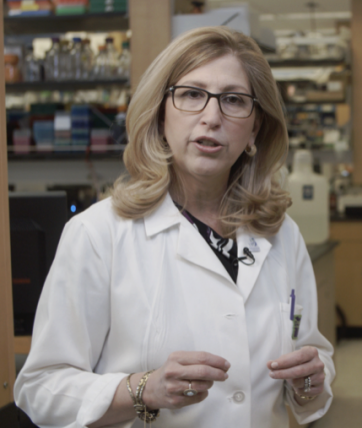 Teresa Woodruff, PhD, Director of the Women's Health Research Institute recently sat down with Discov-Her to discuss her field of oncofertility--check out the interview below!
Teresa Woodruff, PhD, Director of the Women's Health Research Institute recently sat down with Discov-Her to discuss her field of oncofertility--check out the interview below!
As patients survival rates improve thanks to the development of more effective treatments, women can look forward to a life after cancer. However, many may face the possibility of infertility as a result of the disease itself or these lifesaving treatments. Oncofertility is an interdisciplinary field at the intersection of oncology and reproductive medicine, which expands fertility options for cancer survivors. DiscovHER interviewed Dr Teresa Woodruff, the founder of the Oncofertility Consortium, to learn more.
What inspired you to form the Oncofertility Consortium?
The Oncofertility Consortium was literally ‘born’ from the urgent unmet need of young female patients who were being sterilized by their cancer treatment. Ten years ago the phrase ‘families after cancer’ for women would have been an oxymoron if thought of at all. Today, due to the impressive rise in cancer survivors, this is not only a well-used phrase, but also an issue that women increasingly want addressed. Because both oncologists and fertility specialists need to be included in the solution, I created the work ‘oncofertility’. By including both specialties in the word, with no hyphen to separate the two, the need for integration was generated. And even as the lexicon is being established, the boundaries are being moved to the fertility needs of childhood cancer survivors. The life-preserving but fertility-threatening treatments offered to women and girls with cancer must be coupled with possibilities for preserving reproductive options.
What is the importance of transdisciplinary teams, knowing that you work with specialists from various backgrounds?
I believe that the solutions to the most intractable problems in medicine include teams of individuals who bring different perspectives. In the case of oncofertility, we needed teams because the fertility concerns of young cancer patients could not be solved by one field - we had to integrate. Perhaps most importantly, if we wanted to make options available to patients now, we needed a 360 approach to the problem. We couldn’t just publish papers and wait for clinicians to catch on. We couldn’t just tell physicians to tell a young cancer patient at the time of diagnosis that she would be sterile without options - and we couldn’t let that patient wonder or worry what her church would say, how she might pay for the procedure, or who had rights to the tissue. So, bringing together all of the disciplines of the academy into oncofertility was a necessary first step.
Perhaps our Oncofertility ribbon tells this story best - when I coined the term “oncofertility” I knew we would need a way for physicians and patients to know they were with a group that was doing everything possible to make their hope of a future family a reality - even if this meant years of research and progress that might not help them, but would help someone in the future. So I looked at the list of ribbons - like the pink ribbon for breast cancer - but all of the colors were taken. So, I created a ribbon that is intrinsically interdisciplinary. It twines two colors - purple and green that embody clinical and basic science; humanities and the law; the deep knowledge of self with the spring green of eternal hopefulness for tomorrow. It has dots and smooth lines - the dots representing eggs or sperm or embryos or tissue, which then spools up into the structure of a ribbon, however you can see that ours is bowed - it is slightly pregnant. All of these parts make the ribbon just as our interdisciplinary team creates the field.
What is your experience as a female scientist?
I began my work in oncofertility with women and girls. When I started the Consortium, men and pubertal boys were being offered sperm banking prior to treatment. But young women, with the same hope to survive their cancer were not offered any option nor told that their treatment would be sterilizing. They were told they would lose their hair follicles, but not their ovarian follicles (the latter is the structure that houses the female egg). Now we have equity between males and females - they are being told about the fertility threat of treatment and we have options for both sexes.
Dr. Woodruff is the Thomas J. Watkins Professor of Obstetrics and Gynecology at the Feinberg School of Medicine at Northwestern University. She coined the termoncofertility to describe a new discipline that bridgesoncology and reproductive medicine in order to discover and apply new fertility preservation options for young patients with fertility-threatening diseases or treatments. Dr. Woodruff is also Chief of the Division of Fertility Preservation and Director of the Women's Health Research Institute at Northwestern University.
Source: Discov-Her
 Teresa Woodruff, PhD, Director of the Women's Health Research Institute recently sat down with Discov-Her to discuss her field of oncofertility--check out the interview below!
Teresa Woodruff, PhD, Director of the Women's Health Research Institute recently sat down with Discov-Her to discuss her field of oncofertility--check out the interview below!